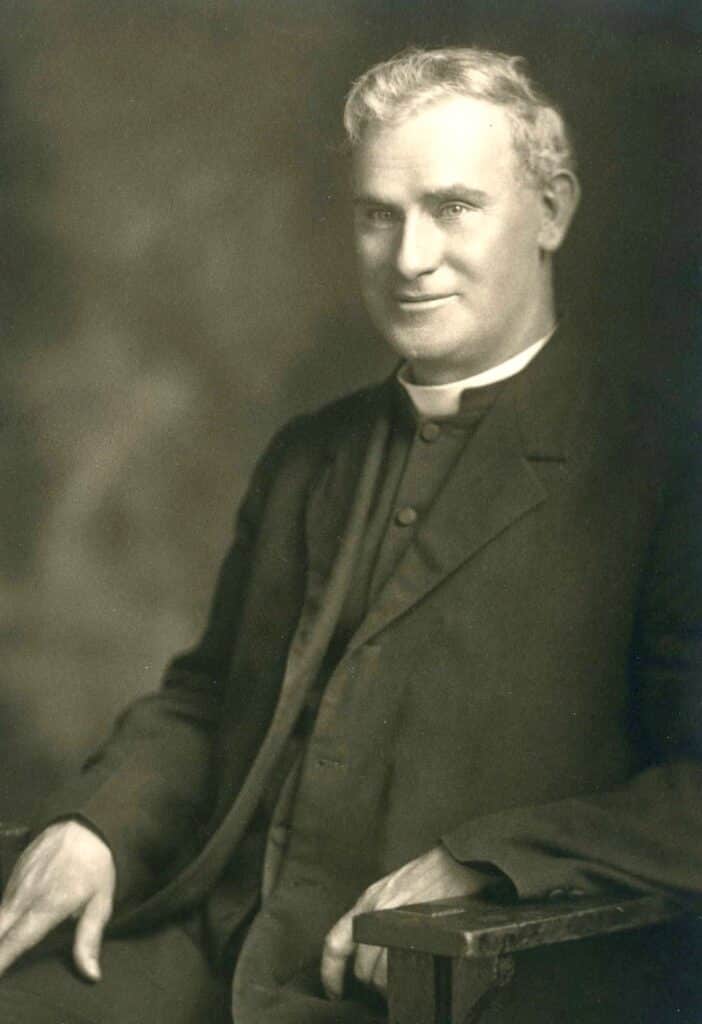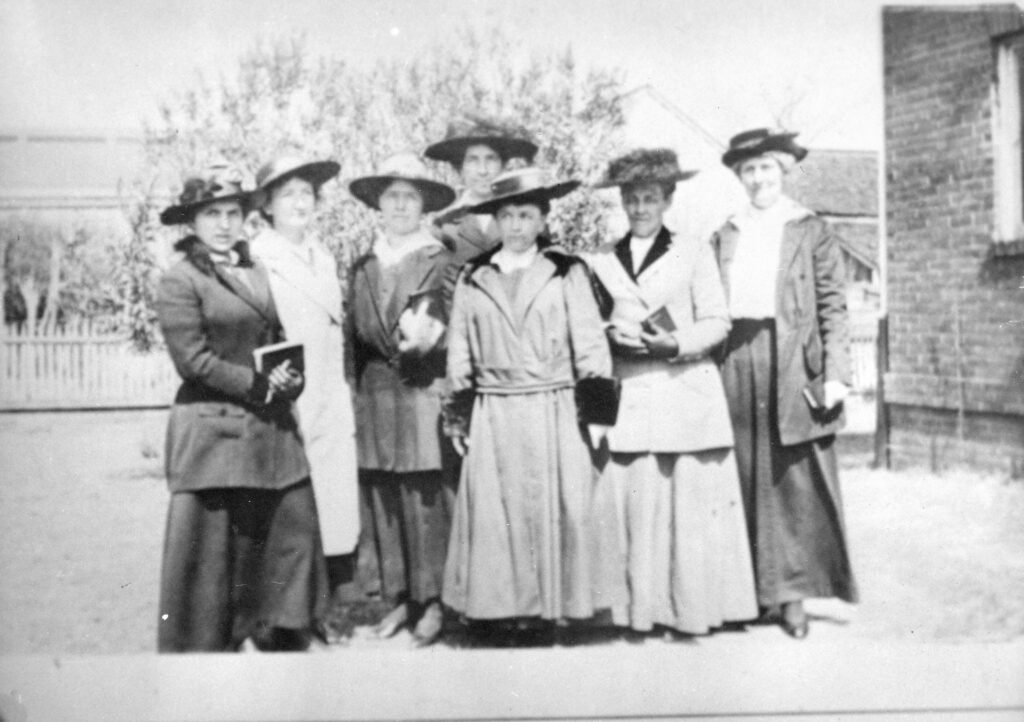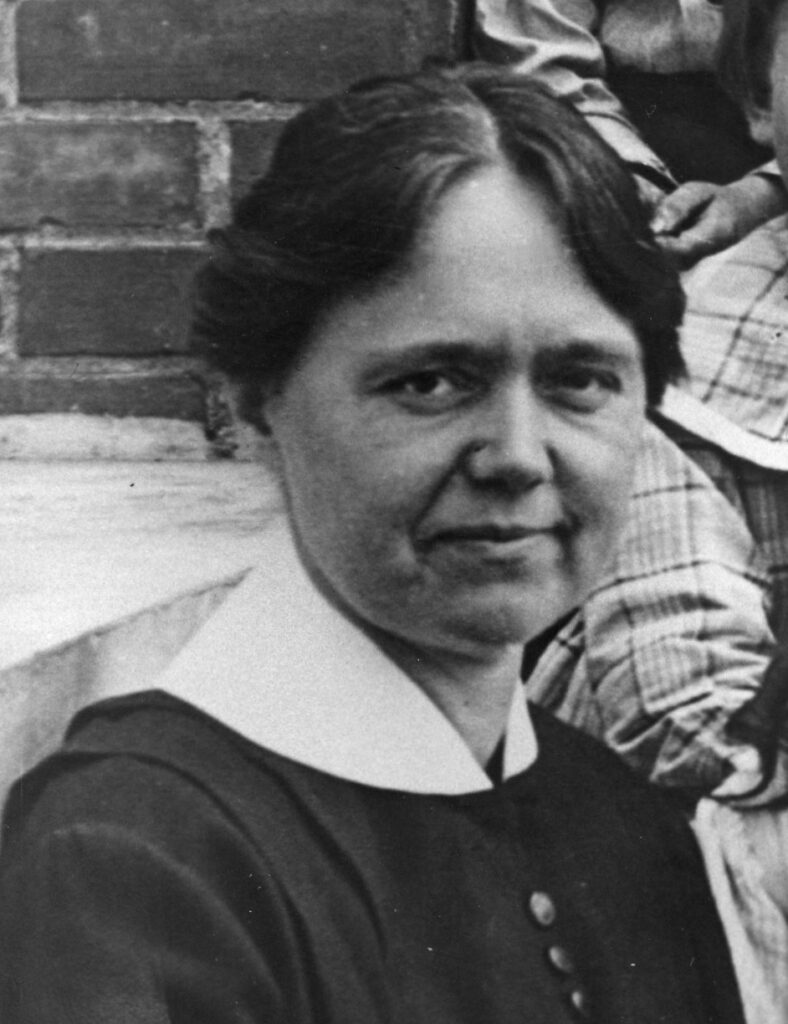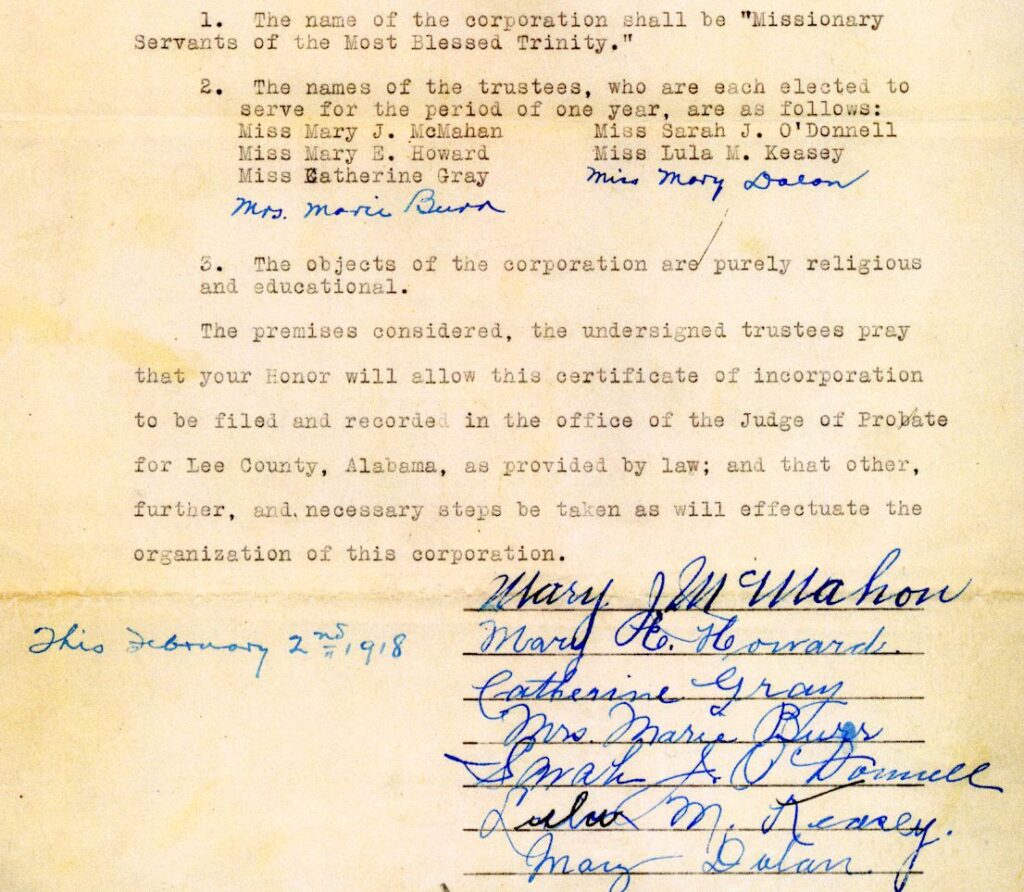Our History

On April 11, 1909, at a meeting in Brooklyn, New York, six women responded to his appeal for lay apostles who would share in the mission and ministry of the Church. In the years immediately following, Father Judge’s influence inspired women and men from many walks of life to become members of this lay apostolic band, later known and accepted in the Church as the Missionary Cenacle Apostolate.

The year following, another Missionary Cenacle was opened in Bridgeport, Connecticut, where the work of the associates pioneered the Catholic Charitable Bureau of that Diocese. In 1915 Father Judge was unexpectedly assigned to a rural Vincentian mission in Opelika, Alabama. This is how, in the providence of God, the Missionary Cenacle came to the southern United States.
Some of the men and women who had been nurtured in the apostolate by Father Judge followed him to the heart of the American Southland. Between 1916 and 1918, while the cenacle lay apostolate continued to flourish in the north, a number of lay volunteers gave their lives completely to the Missionary Cenacle, which was taking a different shape in a rural and remote area of the South. The formal beginnings of distinctly religious apostolic life emerged. A form of community life began in both Phenix City and on a plantation in what would become Holy Trinity, Alabama.

In 1919, Sister Mary Boniface was appointed by Father Judge to be the first General Custodian of the new sisters’ community and received the name Mother Mary Boniface. Under the combined leadership of Father Judge and Mother Boniface, the Missionary Cenacle Family further developed in distinct forms of apostolic life: clergy, religious, and lay.
In the providence of God and in a way humanly unforeseen, two religious communities emerged. Among the members of these infant communities there was a warmth and spiritual camaraderie that closely paralleled the spirit of the infant Church. The two communities, one of men, the other of women, shared the same founder, enjoyed the same heart’s formation from Mother Boniface, participated in the same prayer form, the same apostolate, and even identified themselves by the same name. The men and women were all known as Missionary Servants of the Most Blessed Trinity until well into the nineteen-twenties.
The year 1920 itself was a high point year. In that year, the apostolic delegate, Archbishop John Bonzano, wrote to Father Judge approving, not only the newly formed community of women, but the Missionary Cenacle Lay Apostolate as well.
Mother Boniface died in 1931. Less than three months after her death, in February 1932, the sisters received canonical status from Rome under the original title, “Missionary Servants of the Most Blessed Trinity.”
Father Judge had worked for this; it was a definite and specific decision of his to seek canonical status and when it came he was overjoyed, for the new status incorporated the old from which it had evolved. The lay Missionary Cenacle Apostolate was to remain and the rules of both religious congregations assert that members will foster and train lay apostles for the mission of the Church, with particular reference to the Cenacle laity.
Today the Missionary Servants of the Most Blessed Trinity serve the Church in many dioceses across the continental U.S., Puerto Rico and Mexico where they continue to respond to Fr. Judge’s call to be “a power for good”, to develop a missionary spirit in the laity and to work for the preservation of the faith, especially among Catholics that are abandoned.

